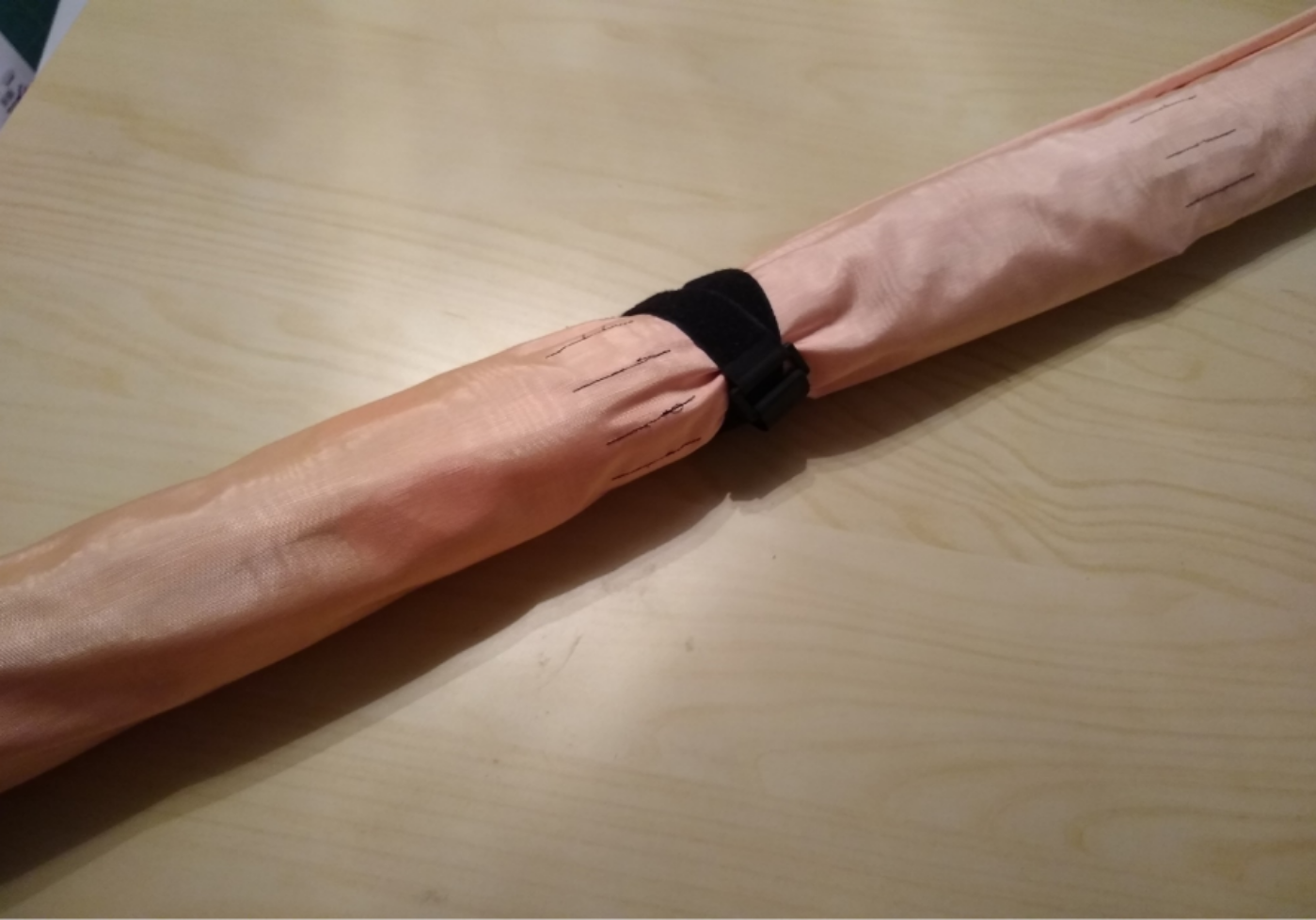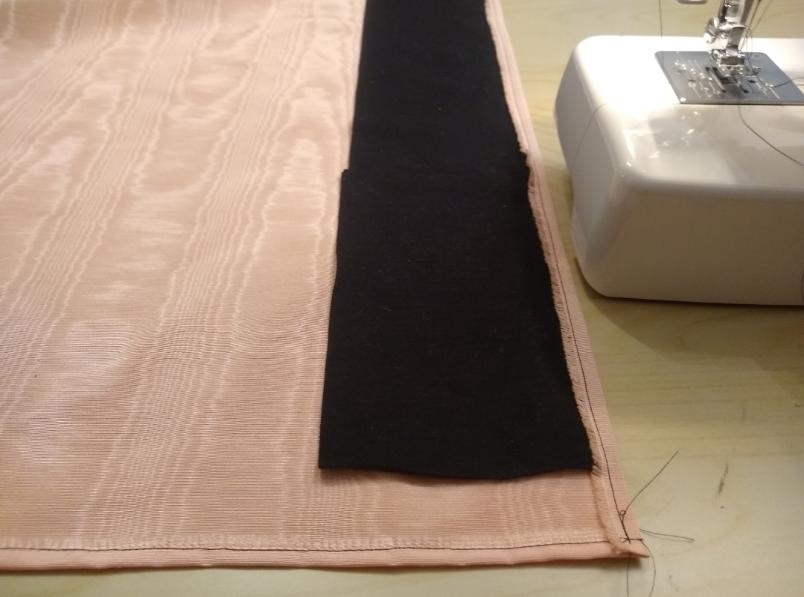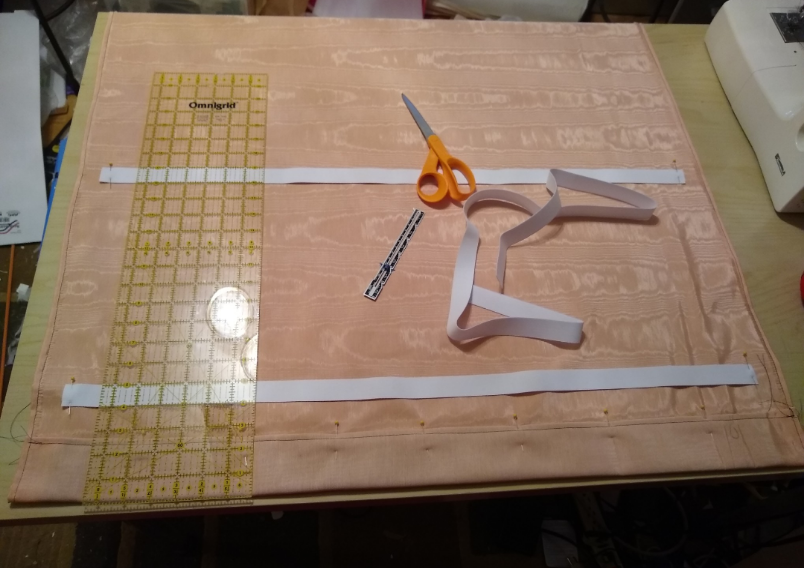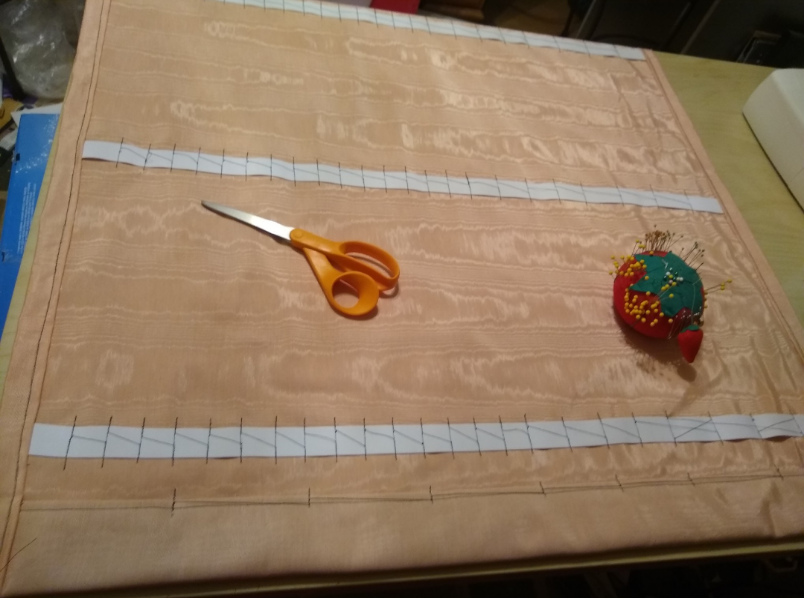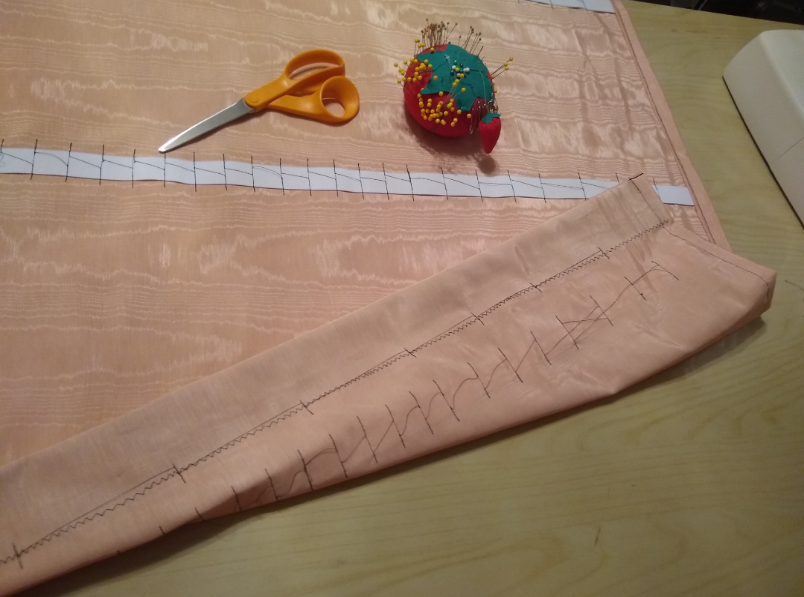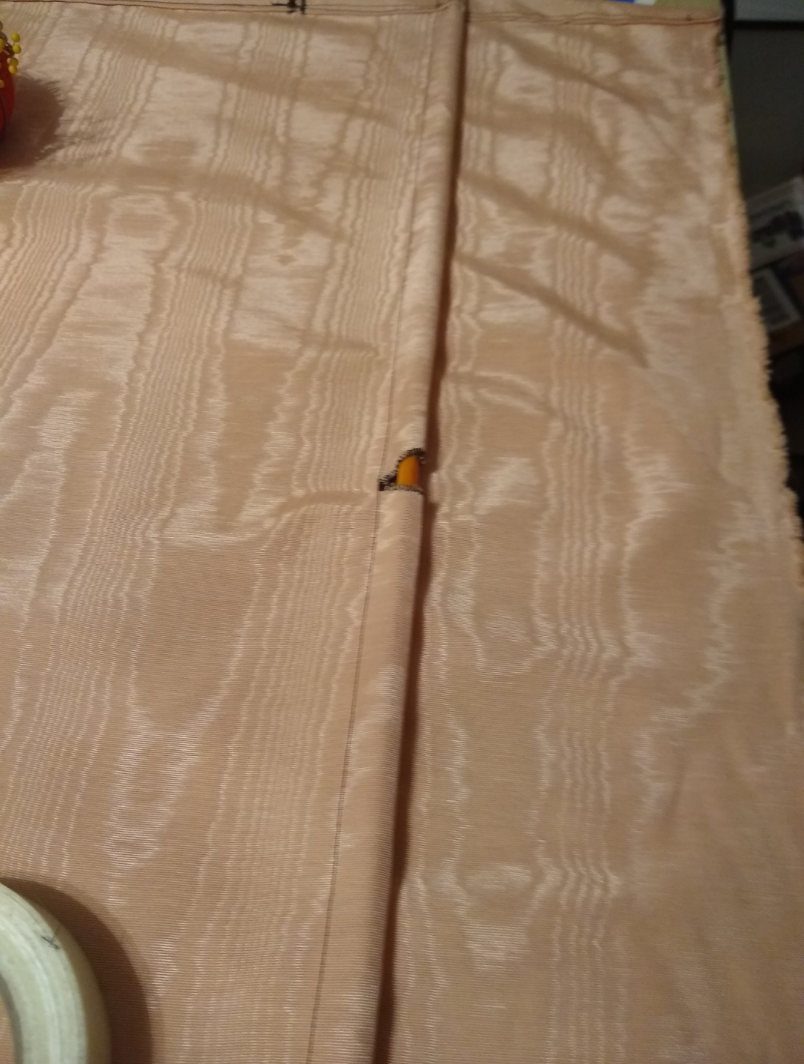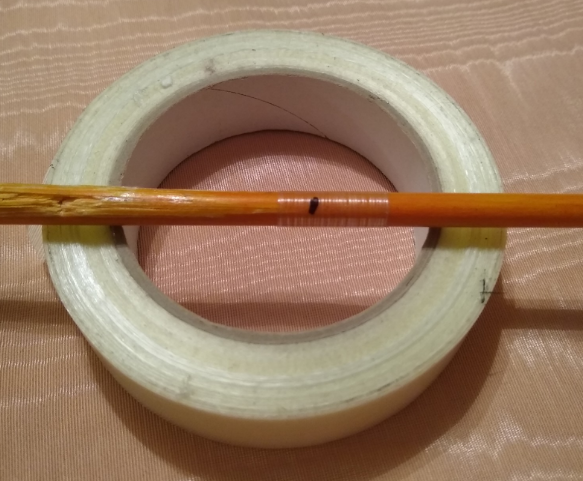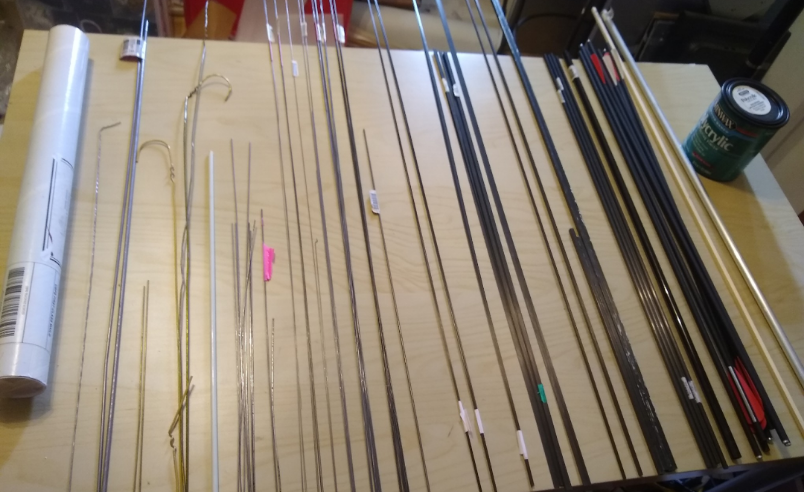-
Finish
12/08/2021 at 03:21 • 0 commentsAfter it was all finished, I loaded up the stock, and used labels on strings to label the dimensions.
I think it is easier to roll if all the larger stock is on one end(I made the pockets that way too) because it is easier to start rolling, and it ends up more uniform having the narrower stuff on the outside of the roll.
I did include 1 oversized piece, which just goes on the end that is the middle, and sticks out the top, to the side of the flap.
![]()
To wrap, it is simply folding the top flap down and start rolling. A simple Velcro tie keeps it closed. Stock doesn't slide out the bottom because of the bottom pocket, nor out the top because of the flap. Further, because the roll and Velcro tie keep it all tight, friction keeps things from sliding anyway.
![]()
To find a piece, I can simply unroll it on the table, or hang it from a door frame. To hang, i pull the top support dowel out of the wrap, slide it in the top channel, and put a hook through the opening. The top flap simply folds out of the way on the back.
![]()
Works great so far!
-
Construction
12/07/2021 at 19:37 • 0 commentsReinforcement
As some of the stock is very thin, it could poke through the bottom pocket. I used a second piece of thick fabric, and doubled it for the bottom 5". The lower edge was attached by turning the edge of be the main fabric over it and stitching. As this was the selvage (which I didn't remove), a single fold was sufficient.
The top edge I zig zag stitched over the edge to help stock slide over the edge.
This black reinforcement is entirely concealed in the pocket.
As I was using scraps, i didn't have a strip long enough, so just pieced them.
![]()
The 2 raw edges were partly bound by a single fold hem. The second needed fold would occur later while making the dowel pockets.
The bottom edge was folded up 2.5" and pinned in place to make the bottom pockets. The edges would be trapped in the edge dowel pockets, and stitches would be added to divide the pockets later
Next I laid out the elastic strips. These didn't go all the way to the edge as that would create a bunch up when the dowel pockets were made. Instead they were just long enough to capture in the dowel pocket stitching. These were spaced 2" above the bottom pocket, then 12 and 24" above that.
![]()
Side dowel pockets
I made slits 40" up from the bottom so that the dowels could be inserted/removed and folded the pockets over and stitched. This trapped the elastic and bottom pocket ends. The slits were needed because that pocket extends above the 40" into the top fold over.
![]()
Stock pockets
I tested out some pocket sizes with pins, and settled on 4 pockets at 2" wide, 4 pockets at 1.5", and the remainder at 1". I did test 1/2" pockets, and while helpful for the piano wire, it made it much harder to get stock in.
After measuring out the same sizes along all three elastic strips, simple stitches separated them. I went past both edges with back stitching to best reinforce.
As the bottom pocket doesn't stretch, i added a separation every 4"(or 3"). This was needed to keep it from falling down, and if one of the slots was over filled, it could spread a little more in the non-stretch bottom pocket.
![]()
This created lots of tails to cut off...
![]()
Top hanging pocket
To be able to hang the opened roll, I created a pocket in the top flap, a few inches above the fold over line (40" from bottom). Before sewing, I cut and reinforced an opening in the middle.
![]()
Dowels
I used fiberglass rods as the end dowels and hanging dowel. As fiberglass will shred when cut, i first reinforce it by tightly wrapping with fiber reinforced tape, and cutting through it with a fine toothed hacksaw.
![]()
(You can see i used a scrap rod that was broken, i just cut off the broken end)
The end dowels generally don't come out, so nothing else was required there. The top hanging dowel gets removed when not hanging, so I sleeved it with heat shrink to avoid tiny fiberglass splinters
-
Requirements and Materials
12/07/2021 at 18:37 • 0 commentsRequirements
Sorting through my stock, I came up with some basic requirements:
- At least 20 separated pockets
- Most only need to be 1" wide, handful up to 2"
- Support up to 1meter length (common stock comes in 30, 36 or 40")
- Support for a few longer (ie 48") sticking out the end
- Can still hold shorter scraps
- Velcro strap closure
- Labeling system for stock dimensions
- When rolled, stock can't fall out
Additional extras:
- Ability to hang over a door frame or on a hook
- Use existing materials
![]()
Materials
Fabric
I had plenty of scrap fabric, so could easily use a yard of that. I picked a peach color taffeta as it's thick and heavy, I'm unlikely to ever use this color(I got a stock of ~8 colors of taffeta, though only 2yd each)
I also pulled some smaller scraps of a thick black twill to double the bottom pocket.
Pockets
I decided to go with elastic instead of fabric straps. While the elastic wouldn't impact for any pockets which are not full, it does give the ability to somewhat overfill if needed.
While it could use elastic scraps, I opted to just buy new to keep consistent.
Dowels
A removable dowel was needed if i wanted to hang it. And from experimentation the rolling worked much better if there were also dowels on both edges. I didn't have any wood ones, but do have a stock of snow plow markers. These are long orange fiberglass rods that businesses stake into the ground at the edge of curbs. They are used to help snow plow drivers know where the curbs are when fresh snow obscures them. Also used to mark the edges of driveways, they are pretty available.
Straight wire and tube stock storage
A wrap storage pouch to organize piano wire, rods and tubes for modeling
 Quinn
Quinn
